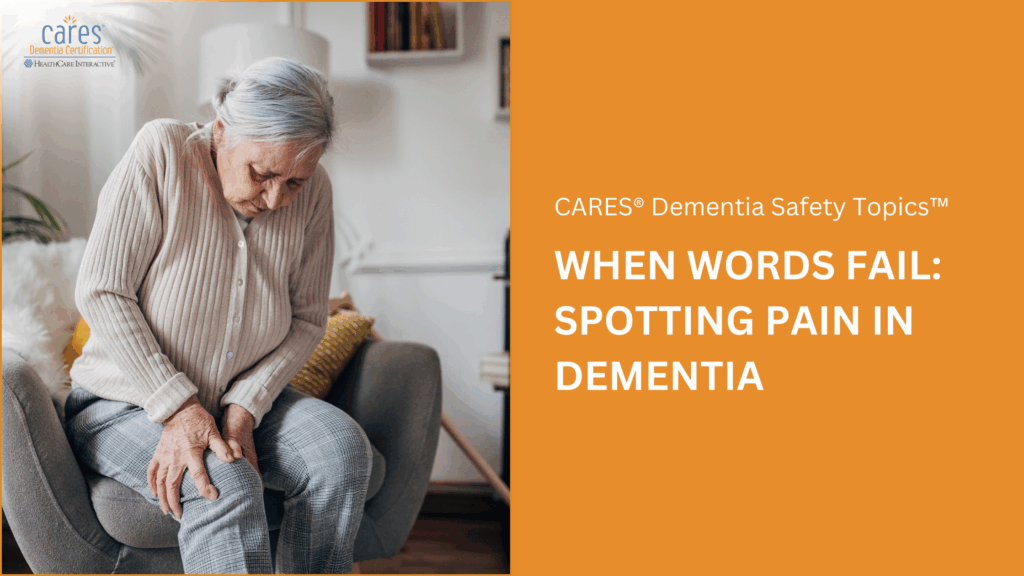Pain is a deeply personal experience, and for people living with dementia, it can be especially challenging to communicate. As caregivers, loved ones, or healthcare professionals, it’s important to be attentive to the signs of discomfort—both verbal and nonverbal—and to take gentle, thoughtful steps to ease their suffering. This blog will guide you through recognizing pain symptoms in people with dementia and offer simple, compassionate ways to help them feel more comfortable.
Recognizing Pain When Words Fail
People with dementia may not always be able to say, “I’m hurting.” But their behavior often speaks volumes. Pain can show up in many subtle and not-so-subtle ways. Here are some signs to watch for:
Verbal Symptoms:
• Sighing, moaning, or groaning
• Crying or yelling
• New or repetitive swearing
• Saying “ouch” or other expressions of distress
Physical or Behavioral Symptoms:
• Grimacing or clenching teeth
• Guarding a specific body part
• Agitation, pacing, or wandering
• Increased confusion
• Resistance to care, even lashing out
• Rigid posture or slow movement
• Noisy breathing or changes in vital signs
• Withdrawal or depression
• Trouble sleeping
• Excessive sweating
• Noticeable changes in weight
It’s important to remember: these signs don’t always mean the person is in pain. But when you know them well, and you notice changes in how they behave, you’re in a better position to understand what they may be feeling.
Simple Ways to Comfort and Connect
Fortunately, easing discomfort doesn’t always require medication. In fact, small gestures of comfort—rooted in care and familiarity—can go a long way.
Here are a few ways you can help relieve pain and promote a sense of peace:
• Offer a warm (not too hot) cup of tea – A soothing routine and a comforting beverage can do wonders.
• Sing with them – Music taps into memory and emotion, often calming and uplifting at once.
• Comb their hair – A simple act of grooming can bring calm and connection.
• Play soft, familiar music – Music from their past can help them relax and feel safe.
• Move them gently to bed – If they seem restless or tired, help them get more comfortable.
• Offer a gentle hand massage – Touch can be reassuring, especially with warm hands and calm energy.
• Wrap them in a warm blanket – This helps both physically and emotionally, providing a sense of safety.
• Use scented lotions or oils – Calming scents like lavender can distract and soothe.
• Encourage light physical activity – A short walk or light stretching can release tension.
• Talk about happy memories – Reminiscing can reduce anxiety and shift focus from discomfort.
The Power of Personalization
No two people with dementia are the same. What comforts one may irritate another. That’s why it’s so important to think about who they are as a person. What did they enjoy before dementia? What soothes them now? What routines do they still recognize?
Whether it’s gardening, holding hands, listening to jazz, or watching birds out the window—let their preferences guide your actions. Knowing their history and personality is one of the most powerful tools you have in easing their pain.
Caring for someone with dementia calls for patience, meaningful connection, and the right techniques. As you continue learning how to recognize and ease pain, you can take your skills further with the CARES® Approach.
To help you on this journey, enjoy 10% OFF any training or certification program with promo code BeautifulAugust at checkout. Offer valid through Aug 31, 2025.

